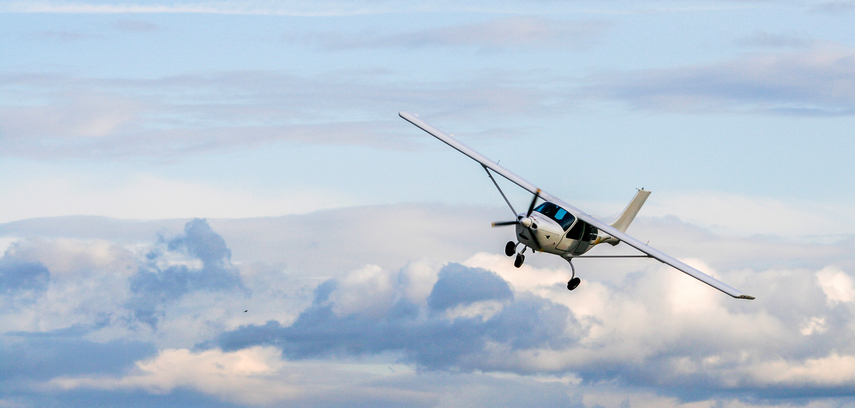
Spring is nearly here, and many of us are anxious to get back to flying after a long, cold winter. Especially if your airplane has been sitting for an extended period of time, it’s important to bring it out of “hangar hibernation” the right way. Here are six things to cross off your list before flying this spring:
Spring clean your airplane
Spring cleaning isn’t just for your home, but for your airplane, too. Start by clearing away any dirt, bugs, and debris that may have accumulated on the surface of your aircraft. Follow the wash with a wax or sealant to protect against corrosion and keep your airplane looking its best.
When cleaning your aircraft propeller, we recommend using a mild cleaning agent, such as a simple solution of dish soap and water. Make sure to wash your blades in a down position, so the water doesn’t run back toward the propeller hub and damage a seal.
Don’t forget about the interior
There’s nothing better than having a clean, tidy aircraft interior. Remove any trash and check, organize, and restock items like flashlights, batteries, or checklists. Then, vacuum the interior and dust off the panel and controls. Avoid using automotive detailing products with a shiny, glossy finish, as they may cause glare on the windscreen. Finally, clean the windows from the inside using an approved cleaner and a non-abrasive cloth.
Inspect the aircraft for corrosion, leaks, or mechanical issues
Depending on your climate and where you keep your airplane parked, winter could cause unforeseen damage. Carefully inspect for things like cracked seals, corrosion, leaks, or mechanical issues that may have been caused by cold temperatures or ice. Unfortunately, there’s always the chance that a critter has made a home in your airplane during the winter months. It’s not uncommon to find evidence of nests made by birds, mice, or even wasps in the engine compartment or throughout the airframe. If you notice anything unusual during your inspection, notify a maintenance professional before your first scheduled flight.
Service the tires
After the cold months, you can expect your airplane’s tires to be a little low. As you prepare your airplane for spring flying season, carefully inspect each tire for signs of damage and wear, and always make sure they are properly inflated. An underinflated tire can be highly dangerous. Because aircraft tires operate at extreme pressures, speeds, and temperatures, underinflation could cause the structural failure of the tire. And just like a car tire, an underinflated aircraft tire may also put you at an increased risk of hydroplaning. It’s not enough to just inspect your tires visually. Experts recommend performing pressure checks using a calibrated gauge before every flight, preferably when the tires are cold.
Update your flight bag
If it’s been a few months since your last flight, it’s probably time to update the contents of your flight bag. Throw out any trash or unwanted paperwork and refresh your supply of things like batteries, pens, and paper. If you use an electronic flight bag, be sure the software you’re running is up-to-date and working smoothly. Now is also the time to update your onboard emergency survival kit and restock any supplies that have expired.
Evaluate your fitness to fly
If you don’t fly as much in the colder months, you might be feeling a little rusty come springtime. As with any flight, it’s essential to evaluate the risks you bring to the equation as the pilot and set personal minimums accordingly. Ask yourself if you are ready for your next flight in terms of recency, currency, and proficiency. If you are unsure about your fitness to fly, you could always practice certain maneuvers on a flight simulator until you feel more confident.
A safe flying season starts with you! Keep this list handy for when you’re ready to get back in the air this spring.